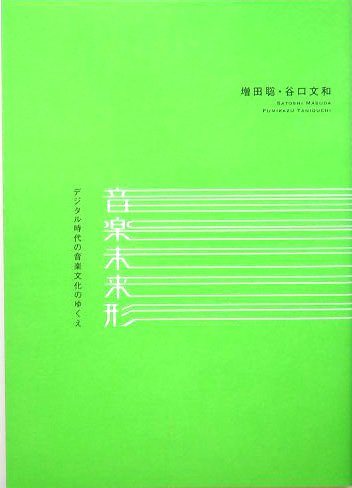14 0 0 0 OA ターンテーブリズムにおけるDJパフォーマンスの音楽的分析
- 著者
- 谷口 文和
- 出版者
- The Japanese Association for the Study of Popular Music
- 雑誌
- ポピュラー音楽研究 (ISSN:13439251)
- 巻号頁・発行日
- vol.7, pp.15-34, 2003 (Released:2009-10-29)
- 参考文献数
- 21
“Turntablism” could be defined as a musical genre in which DJs claim that the turntables they operate are “musical instruments”. In this paper I discuss the concept of “turntables as musical instruments” through the analysis of DJ performances. For this purpose I devised my original notational system which facilitates transcription of the DJ's body movements along with the musical sounds.The analysis of the performances using techniques such as “scratch” and “beat juggling” shows that the sound patterns reflect the DJ's motor patterns. An understanding of this relationship, gained through watching or practice, as opposed to just listening, gives deeper insight into its musical construction. In this sense, the musical style of turntablism is not simply that of sound itself, but also that of related musical experiences, including performing and listening. In conclusion, this insight makes it natural for those who enjoy turntablist performances, both DJs and listeners, to consider the turntables as “musical instruments”.
4 0 0 0 OA 録音・複製テクノロジーと音楽聴取体験の多層化 : オーディオ趣味とDJ文化を中心に
- 著者
- 増田 聡 谷口 文和
- 出版者
- 鳴門教育大学
- 雑誌
- 鳴門教育大学研究紀要. 芸術編 (ISSN:13434403)
- 巻号頁・発行日
- vol.19, pp.25-35, 2004
Today, recording and reproducing technology is so essential that we cannot ignore its influences on our musical experience. However, it seems that many of us are still obssessed with the idea that recorded music is only subsidery to "live" music. The purpose of this paper is to rethink musical listening with reproduction. Hi-fi maniacs have two ambivalent principles: that reproduced sound should be identical to its "source" , and that they can make sound with their equipments as they feel favorable. Though, the privileged "source" never sounds without reproduction, so they can evaluate the fidelity of sounds only by imagination. On the other hand, when they assume that audio equipments "create" sounds, they cannot feel sure if they really listen to music. Sound systems for club music is designed with the principle same as the latter type of hi-fi manias. But the audience feels the "aura" from reproduced music, because DJs who mediate between records and them make the field where they listen to music authentic. While hi-fi maniacs who pursue imaginative "source" has been reproducing "loss of aura" , DJ cultures restore the aura. Thus, both musical practices of hi-fi maniacs and DJs use the same technology, but bring different musical experiences. And here we can elucidate the multi-layered structure of musical listening, where we differently imagine "what makes music".

